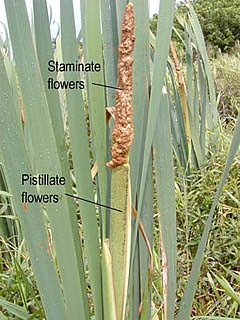Yellow Bittern (Ixobrychus sinensis)- Immature- Id for reeds?
J.M. Garg
--
With regards,
J.M.Garg
"We often ignore the beauty around us"
For learning about our trees & plants, please visit/ join Google e-group (Indiantreepix) http://groups.google.co.in/group/indiantreepix?hl=en
For my Birds, Butterflies, Trees, Lanscape pictures etc., visit http://commons.wikimedia.org/wiki/Special:Contributions/J.M.Garg
J.M. Garg
From Wikipedia, the free encyclopedia
| Typha latifolia | ||||||||||||||
|---|---|---|---|---|---|---|---|---|---|---|---|---|---|---|
 Mature male flower spike of Typha latifolia; female flower spike beneath it is still green (immature) | ||||||||||||||
| Scientific classification | ||||||||||||||
| ||||||||||||||
| Binomial name | ||||||||||||||
| Typha latifolia |
Typha latifolia (Bulrush, Common Bulrush, Broadleaf Cattail, Common Cattail, or Cat-o'-nine-tails) is a perennial herbaceous plant in the genus Typha, which grows in temperate, subtropical and tropical areas throughout the Northern Hemisphere. It grows in marshy areas and flowers in mid to late summer.
The common cattail shares its range with other related species, and hybridizes with Typha angustifolia, narrow leaf cattail, to form Typha x glauca (Typha angustifolia x T. latifolia), white cattail. Common cattail is usually found in shallower water than narrow leaf cattail.
The plant is 1.5 to 3 metres high and it has 2-4 cm broad leaves.
Uses
The rhizomes of Typha latifolia were eaten by many first peoples of North America, as well as the leaf bases and young flower spikes. The rhizomes can be consumed after cooking and removing the skin, while the peeled stems and leaf bases can be eaten raw or cooked.[1]
While Typha latifolia grows all over, including in rural areas, it is not advisable to eat it from polluted water as it is used as a bioremediator, it absorbs pollutants. Do not eat them if they taste very bitter or spic
Cat-tail (Typha spp., Typhaceae). eg. Typha latifolia, T. angustifoliaBest wishes,
Be a better friend, newshound, and know-it-all with Yahoo! Mobile. Try it now. With regards,

